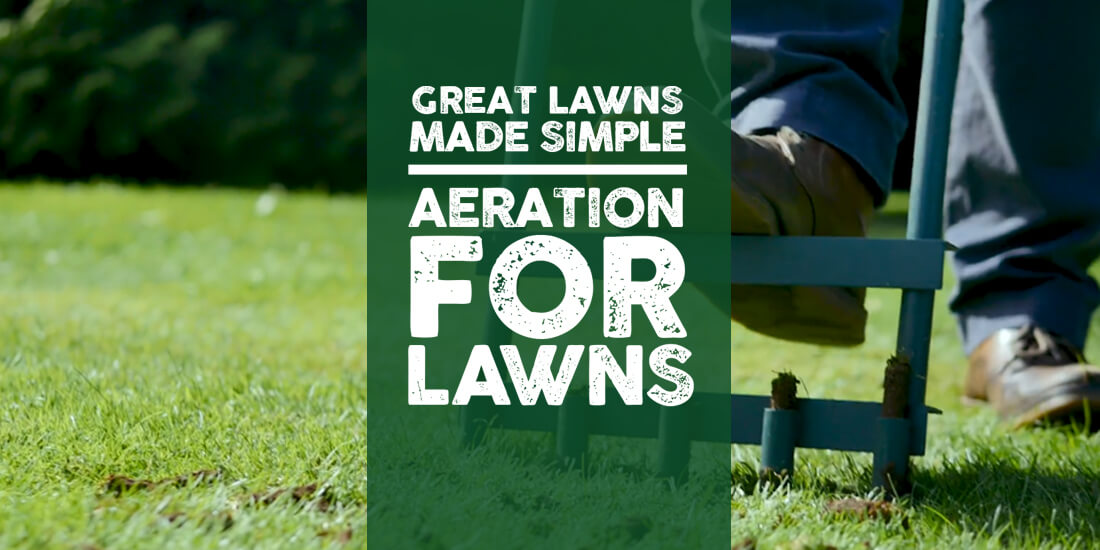Do I need to aerate my lawn?

“Do I need to aerate my lawn?” is as good a question as any when it comes to navigating the ins and outs of keeping your lawn in tip-top condition.
Whether you're sowing a new lawn from scratch or overseeding an existing lawn, your grass will often benefit from aeration. Depending on your soil type, your garden may also grow better using the correct grass seed.
What is aeration?
Simply put, aeration creates holes or slits in the soil to allow air and water to pass through freely. This is mainly done to remedy soil compaction, which often causes waterlogging and can lead to moss and thatch appearing. It’s not just water damage that can be an issue either; in dry months, the opposite can occur, with soil struggling to absorb nutrients correctly. If left untreated, this can kill grass as roots become starved of water.
There’s a good chance you need to aerate your lawn if:
- It experiences heavy traffic, and kids and pets running around your garden all contribute to compaction
- It dries out easily in the summer and becomes very waterlogged in the wetter months
- You notice a build-up of moss over winter
Which method is right for me?
There are several different tools and two different methods that are used when aerating. The first is spiking, and the second is pricking. Spiking involves creating holes in the soil at a depth of at least 3 inches. This method is recommended for lawns suffering from heavy compaction, usually noticeable when areas become waterlogged or very dry.
There are two approaches to spiking your lawn depending on the soil build-up and the soil types in your garden. One is with a garden fork which is excellent for smaller areas and sandy/loamy soils, and the other involves coring with a hollow-tine fork which is ideal for heavy clay soils.
Pricking is a little different in that it doesn’t get right down into the compaction layer of the soil but rather opens up small holes in the surface, which are relatively close together. A soil-tine or slitter aerator can be used for this job; these are usually pushed along by hand or can be bought as attachments and fitted behind lawnmowers.
When should I aerate?
The best times to aerate are in summer and autumn. Pricking the soil is good practice throughout the summer as it isn’t too severe but gives your lawn a little relief from surface-level compaction in the high-traffic months. Spiking should be left until autumn when there is less traffic on the lawn.
Aeration can be a tough job, so whilst it may seem like a good idea to aerate as often as possible, it can do more harm than good to you and your lawn. Try to confine spiking to compacted areas, and don’t do this too often. When using a garden fork, only do this once a year, and if using a hollow-tine aerator, cut this down further to once every three years. Pricking can be done a little more regularly, but remember this method won’t solve deep compaction issues.
Generally, aeration is a good practice to carry out every once in a while to improve drainage and alleviate compaction, but it shouldn’t become a regular practice in any garden.
What are the benefits of aerating my lawn?
- Enhanced colour and lushness as roots can take in nutrients from fertiliser easier
- Less chance of moss, weeds and lawn diseases forming
- Overall quicker recovery from heavy use in warm, cold or wet weather
- Improved drainage and less chance of puddling
Ok, I want to aerate my lawn - how do I do it?
We also have a helpful video guide on how to aerate your lawn.
Additionally, knowing what grass seed you need and how to sow it could make the next stage in your project easier.